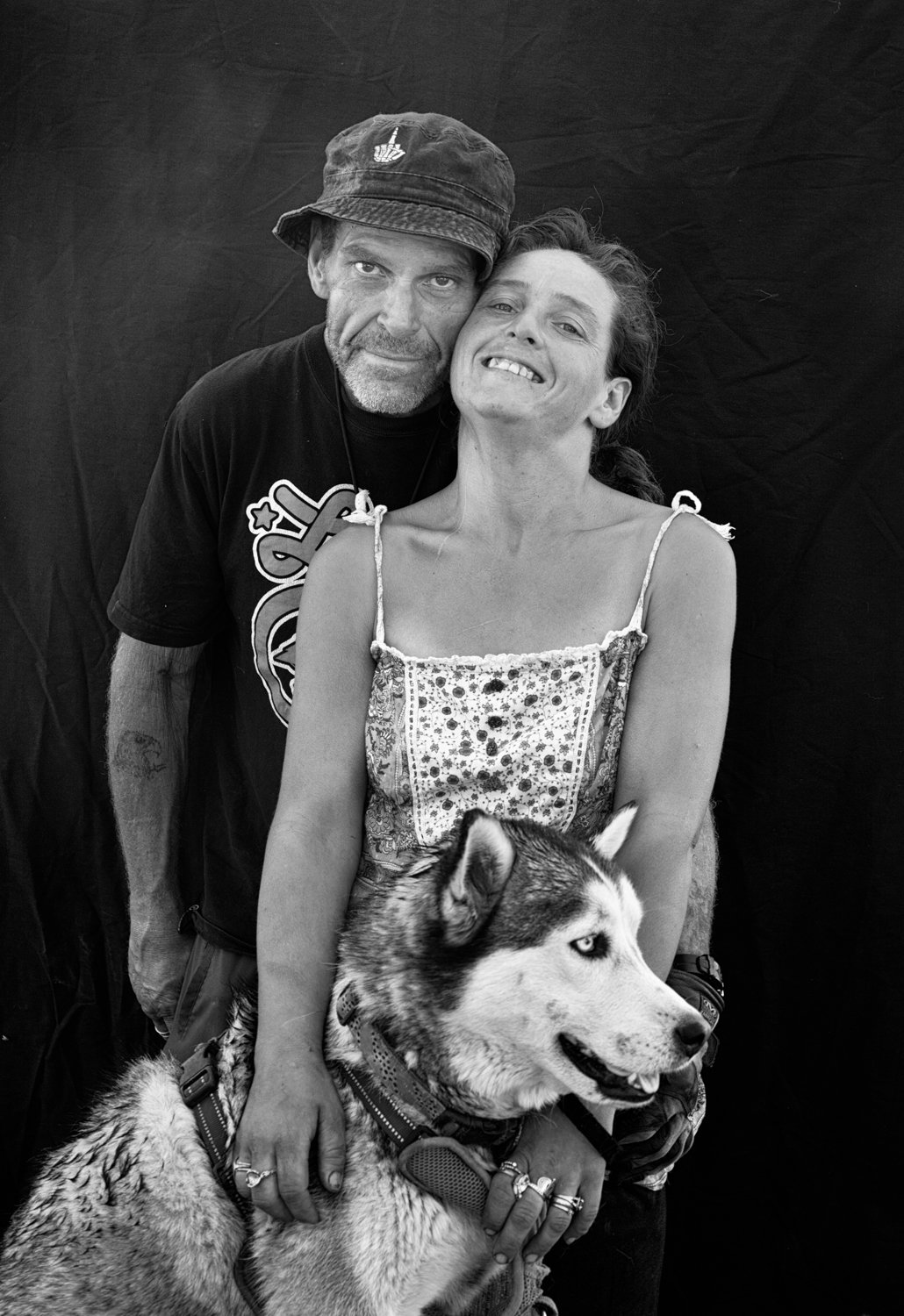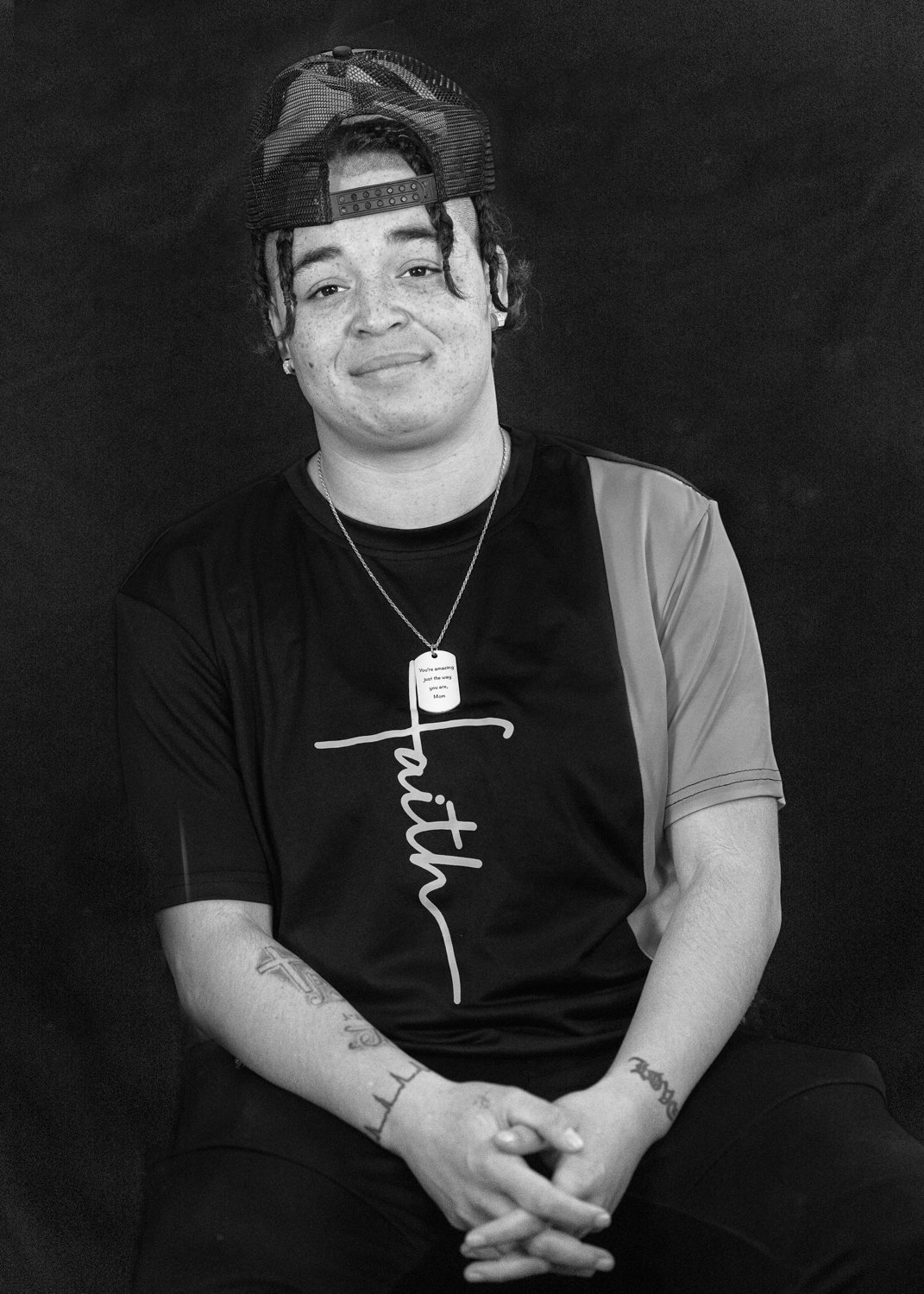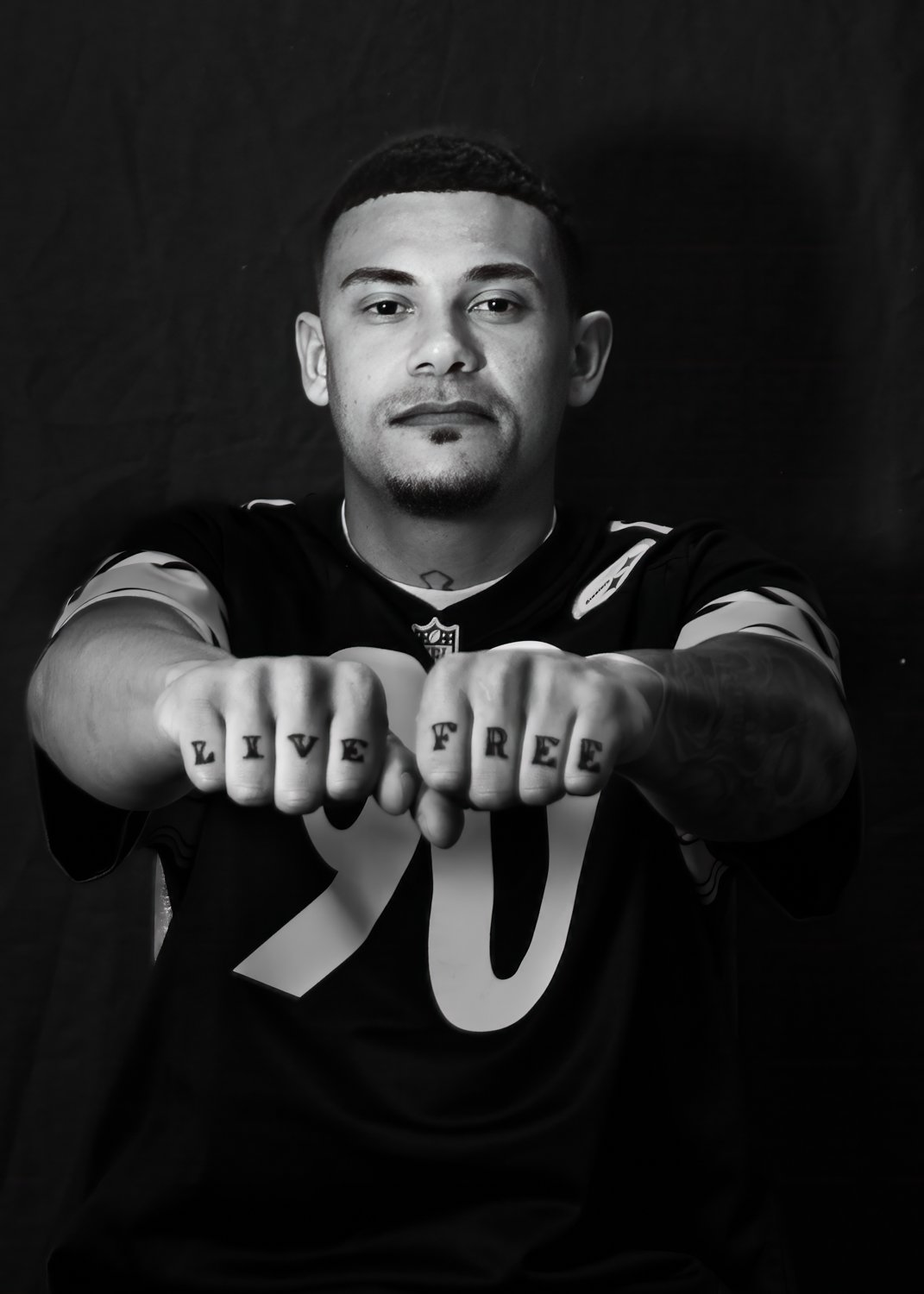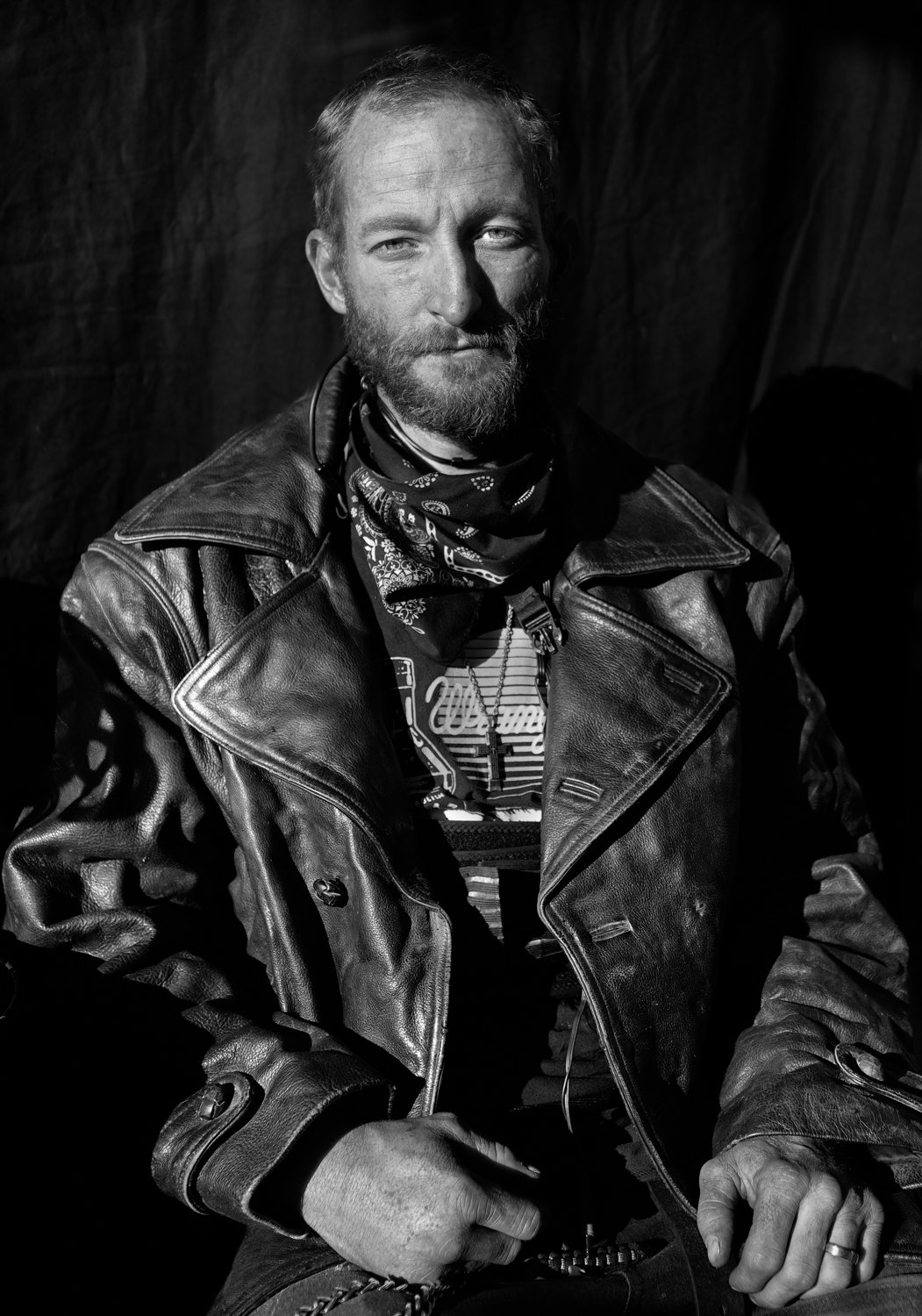




-
Years ago, my local paper ran a story about people experiencing homelessness. The most riveting of the photos showed a woman splayed and possibly unconscious in a McDonald’s toilet stall. I was deeply affected by her suffering, but there was something worse. I was appalled at the invasion of her privacy. I put myself in her shoes. No one—drug addicted or not—wants to be so humiliated.
I contacted the writer of the piece to express my concern and quickly heard back. Her answer was brusque. The woman in question had signed a release allowing the photograph to be used in the newspaper. The reporter’s a** was covered. But how can you extract legitimate permission from someone who is so broken?
The echo of that photograph remained with me, and, now living in Albuquerque, I decided to find a way to photograph people experiencing homelessness—not at a distance or surreptitiously. I would meet people one-on-one and provide a service, taking the photos, making prints, sheathing them in protective plastic, and delivering them the following week.
I was extraordinarily lucky to find the Compassion Services Center shelter and the Interfaith Bible Center Church in the International District of Southeast Albuquerque, an area once known as the War Zone
At the beginning, I photographed using only a handheld camera. But out of respect for the dignity and cooperation of my subjects, I wanted the photographs to be not just better, but excellent. I now arrive each week with a portable studio consisting of a camera, tripod, backdrop, and three LED lights. Known as The Picture Lady at the shelter, today I produce fifteen to twenty prints each week with no thoughts of stopping.
These photographs reflect the truth of homelessness. The people I photograph have interesting lives, past careers, and backstories. They are kind, engaging, and receptive to being photographed. Each one is a unique and important human being.
-
This is an exhibition of eighteen 17” x 22” prints on Baryta paper, matted on white, in black metal frames. The exhibition requires 55 linear feet, although the photographs can also be displayed in two rows of nine and require 32 lines feet.
